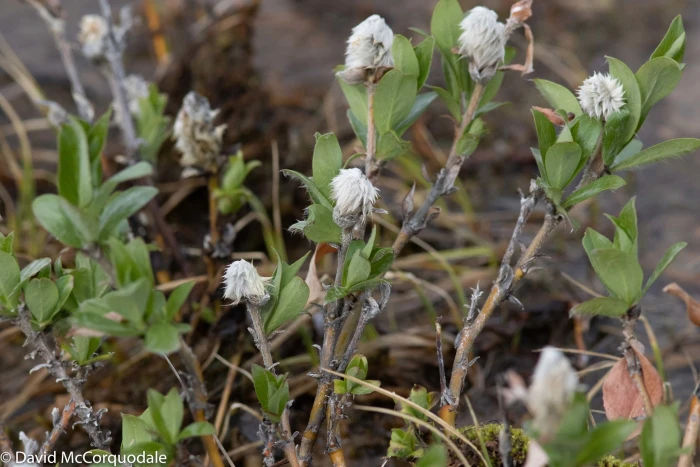Richardson’s Willow
(Salix richardsonii)
Richardson’s Willow (Salix richardsonii)
/
/

David McCorquodale
CC BY 4.0
Image By:
David McCorquodale
Recorded By:
Copyright:
CC BY 4.0
Copyright Notice:
Photo by: David McCorquodale | License Type: CC BY 4.0 | License URL: http://creativecommons.org/licenses/by/4.0/ | Rights Holder: David McCorquodale | Publisher: iNaturalist | Date Created: 2019-07-10T12:38:26-07:00 |























Estimated Native Range
Climate Requirements for Lake Oswego, Oregon
| This Plant | Your Site | Plant Suitability for Your Location | ||
|---|---|---|---|---|
| • Precipitation | 3" - 115" | 45" | Aquatic | Aquatic |
| • High Temp. | 23°F - 75°F | 80°F | Your summers may be too hot for this plant. | Too hot |
| • Low Temp. | -53°F - 31°F | 34°F | OK, but your winter temperatures are warmer than normal for this plant | OK |
This plant may not grow well at your location - your precipitation is too high.
Summary
Salix richardsonii, commonly known as Richardson’s willow or woolly willow, is a deciduous shrub native to the cold, wet environments of the Arctic and Subarctic regions. It is found in Alaska, northern Canada, and parts of Russia. This species typically forms dense thickets ranging from 3 to 7 feet in height but can occasionally reach up to 21 feet. Richardson’s willow has smooth-barked stems with distinctive hairy young twigs. As a dioecious plant, it produces separate male and female catkin inflorescences, which emerge before the leaves in early spring. The catkins are not particularly showy but are critical for early-season pollinators. It thrives in a variety of wet habitats, including along streams, floodplains, within spruce forests, and across the tundra.
Richardson’s willow is valued for its ability to stabilize eroding streambanks and its ecological role in providing food and habitat for wildlife such as moose, caribou, and beavers. Its dense growth habit makes it suitable for use as a windbreak or for erosion control in appropriate climates. In cultivation, it requires consistently moist to wet soil conditions and can tolerate a range of soil types, from sandy to clay, as long as they are well-drained. It prefers full sun to partial shade. While generally low-maintenance, it can be susceptible to willow blight and other fungal diseases. Richardson’s willow has a history of use by Native Americans for medicinal purposes and crafting, such as basketry.CC BY-SA 4.0
Richardson’s willow is valued for its ability to stabilize eroding streambanks and its ecological role in providing food and habitat for wildlife such as moose, caribou, and beavers. Its dense growth habit makes it suitable for use as a windbreak or for erosion control in appropriate climates. In cultivation, it requires consistently moist to wet soil conditions and can tolerate a range of soil types, from sandy to clay, as long as they are well-drained. It prefers full sun to partial shade. While generally low-maintenance, it can be susceptible to willow blight and other fungal diseases. Richardson’s willow has a history of use by Native Americans for medicinal purposes and crafting, such as basketry.CC BY-SA 4.0
Plant Description
- Plant Type: Shrub, Tree
- Height: 6-20 feet
- Width: 6-20 feet
- Growth Rate: Slow
- Flower Color: N/A
- Flowering Season: Spring, Summer
- Leaf Retention: Deciduous
Growth Requirements
- Sun: Full Sun, Part Shade
- Water: High
- Drainage: Medium, Fast
Common Uses
Bee Garden, Bird Garden, Erosion Control, Water Garden
Natural Habitat
Native to the Arctic and Subarctic regions, including Alaska, northern Canada, and parts of Russia
Other Names
Common Names: Sandbar Willow, Richardson Willow
Scientific Names: Salix richardsonii, Salix americana f. richardsonii, Salix lanata f. richardsonii, Salix lanata subsp. richardsonii, Salix lanata subsp. richardsonii, Salix richardsonii var. mckeandii, Salix richardsonii var. richardsonii
GBIF Accepted Name: Salix richardsonii